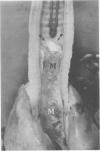Abstract
The dose responsiveness of selected physiologic indices was studied in a sheep model of smoke inhalation injury. In this model, graded severity of injury was achieved by changing the contact time with smoke (defined by "unit"), whereas other variables were kept constant. Blood gas and cardiopulmonary indices were measured in 70 sheep, including 12 controls, either 24 or 72 hours after exposure to 3, 6, 9, 12, 15, or 18 units of smoke. A 12-unit dose of smoke was fatal within 72 hours and an 18-unit dose was fatal within 24 hours. The best correlation between smoke dose and response was observed in arterial oxygen tension 24 hours after exposure. At 24 hours, most of the cardiopulmonary indices showed significant change only after a 12-unit exposure. Although the exact shape of the dose-response curve could not be defined, sigmoid or curved linear shape was suggested, reflecting the progressive deterioration.
Full text
PDF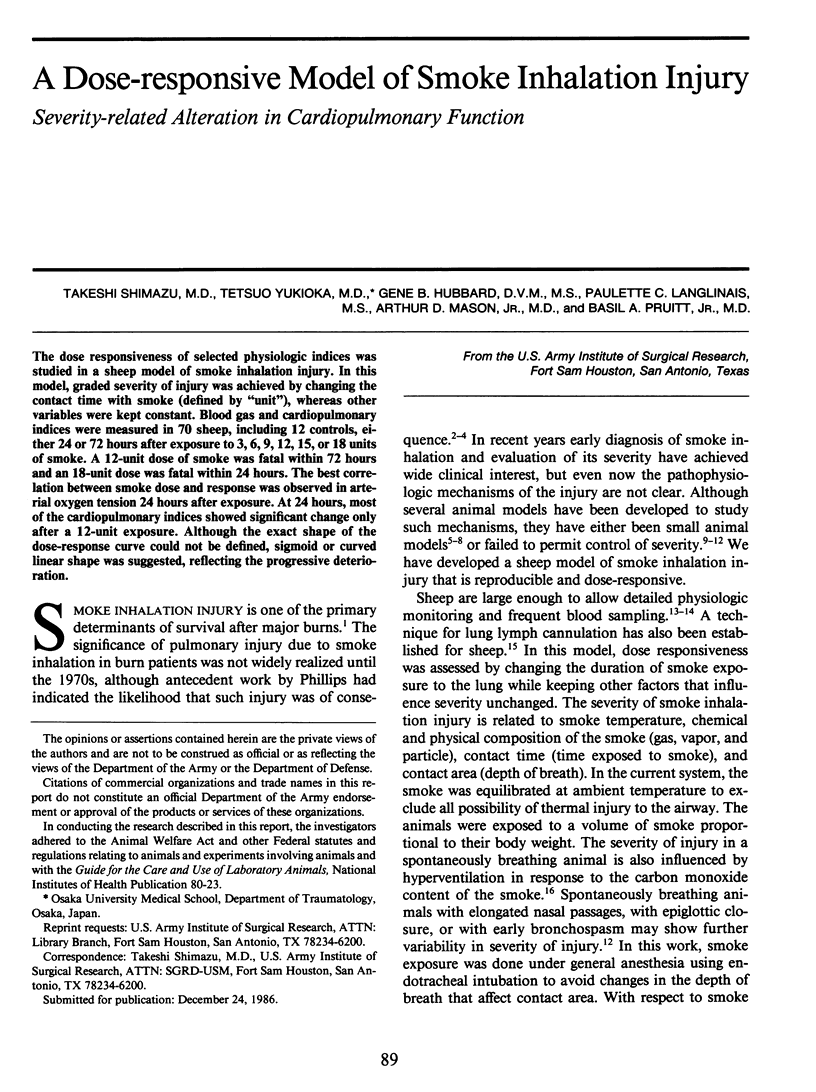
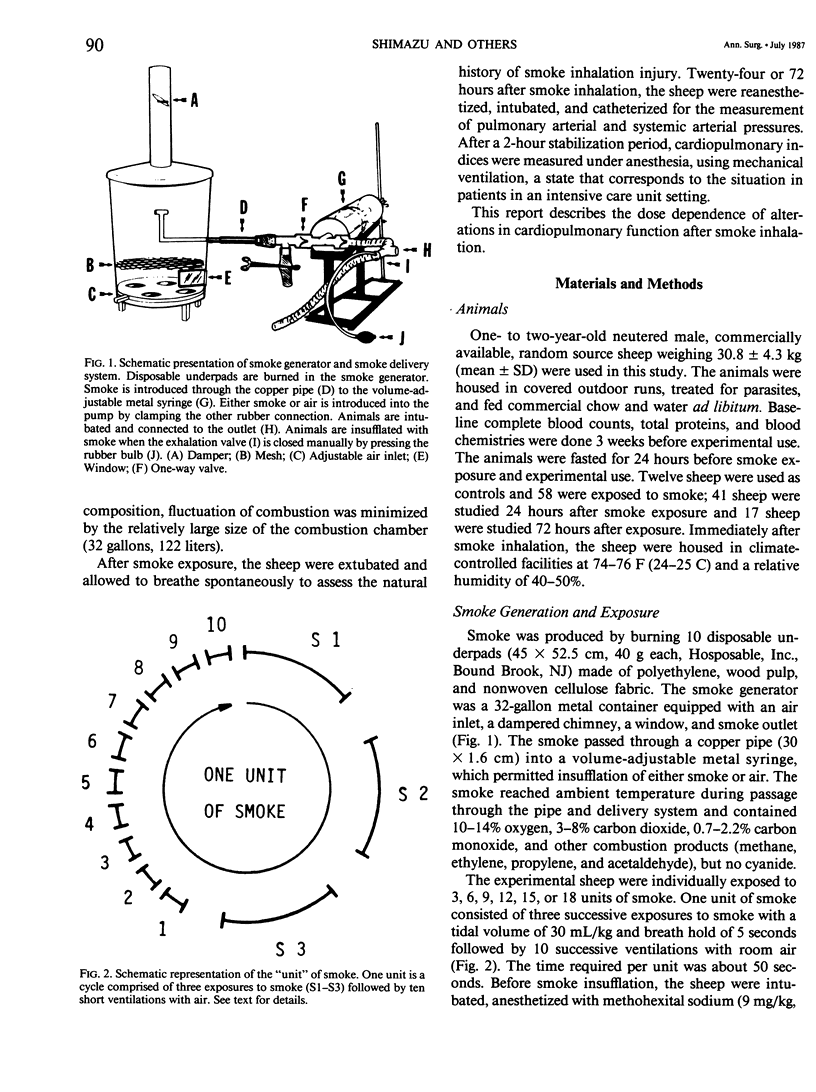
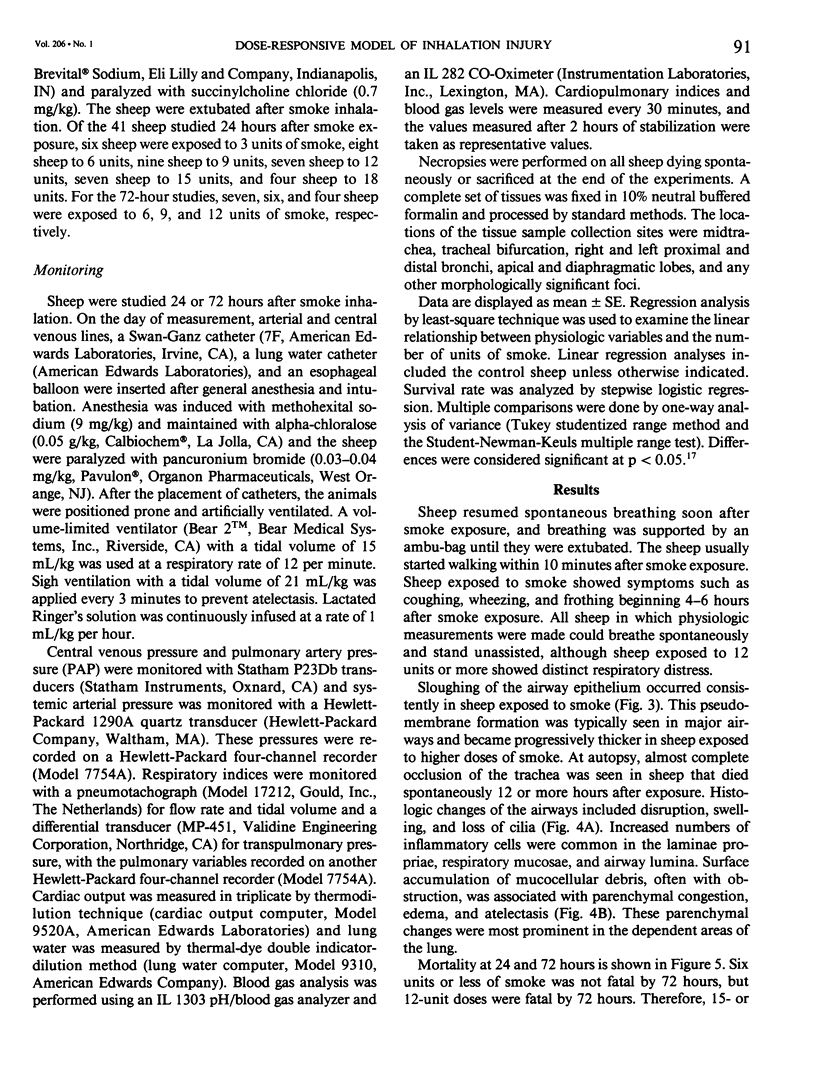
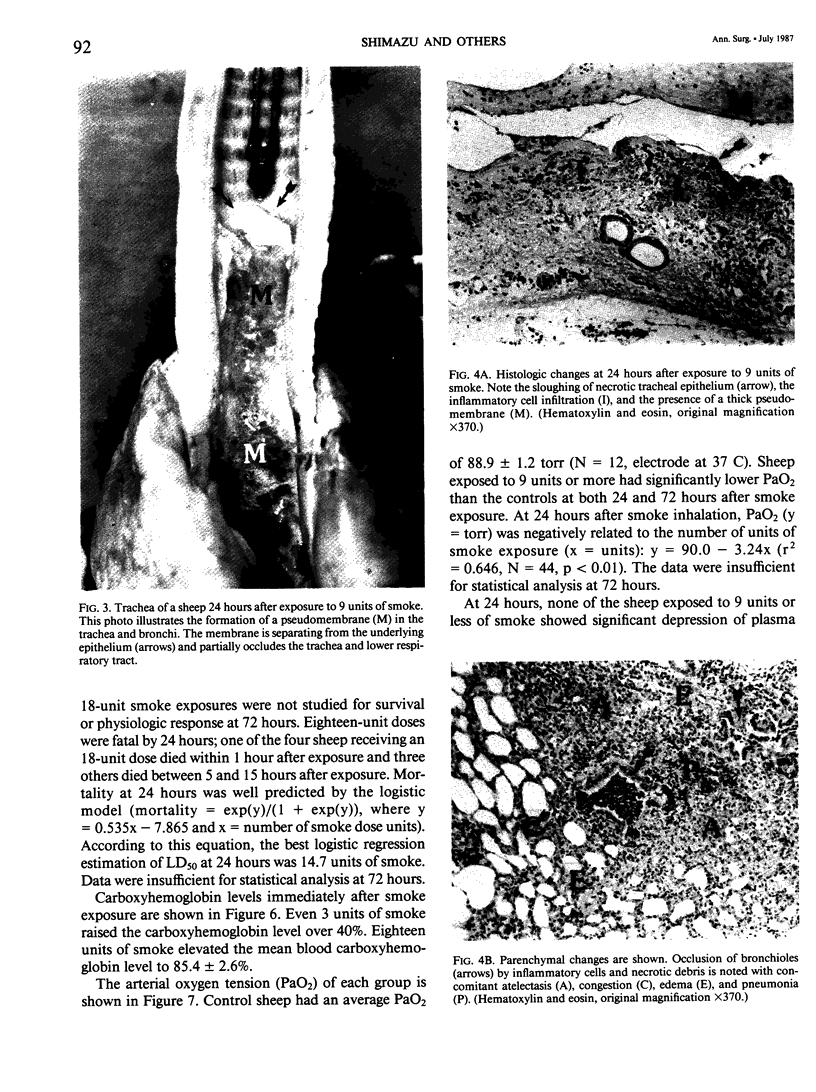
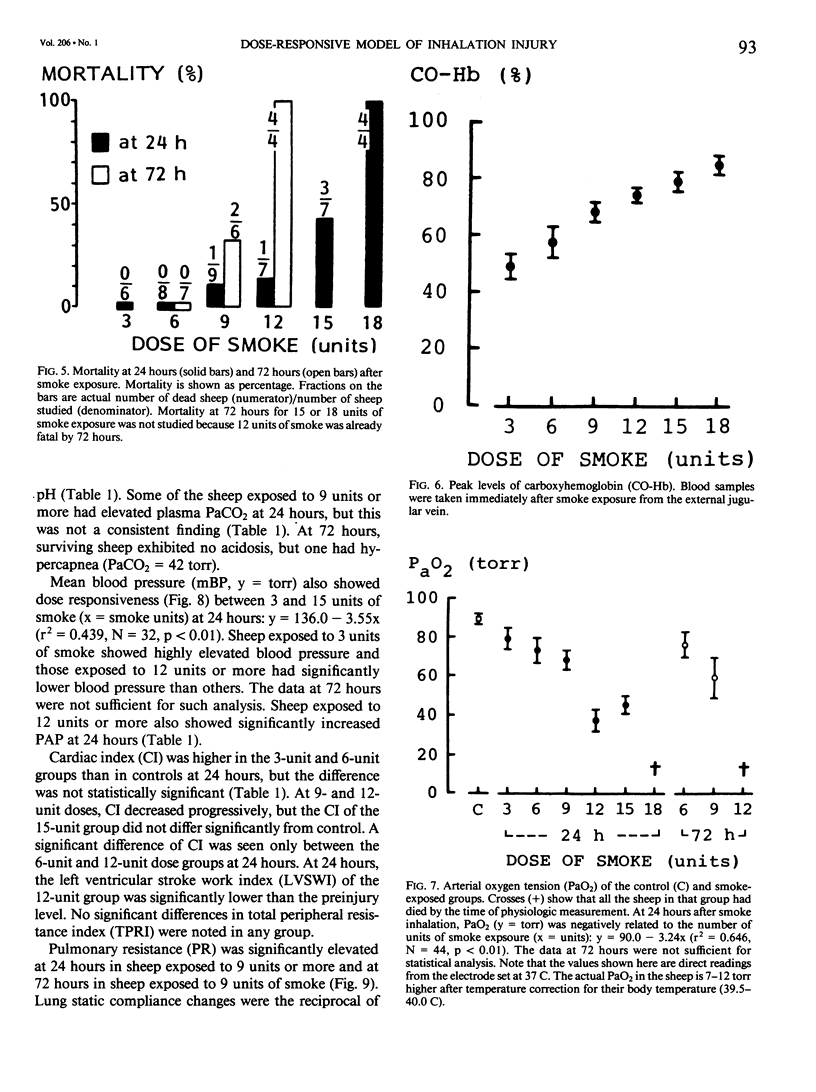
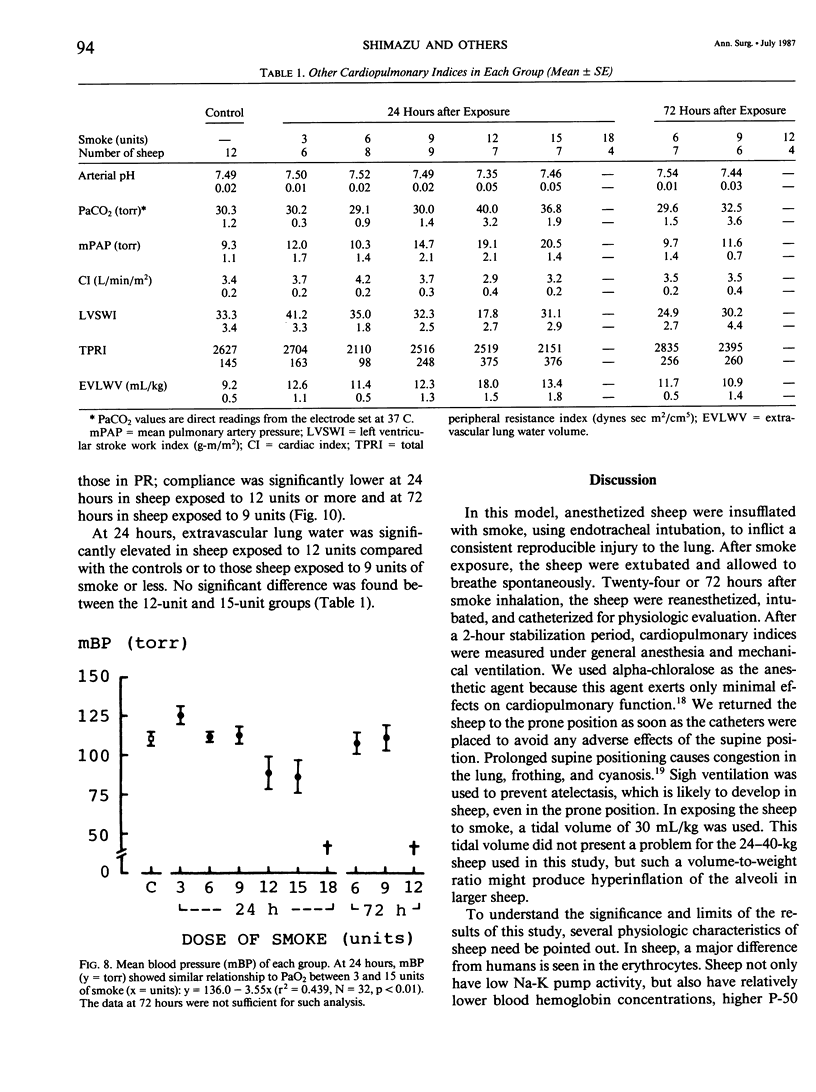
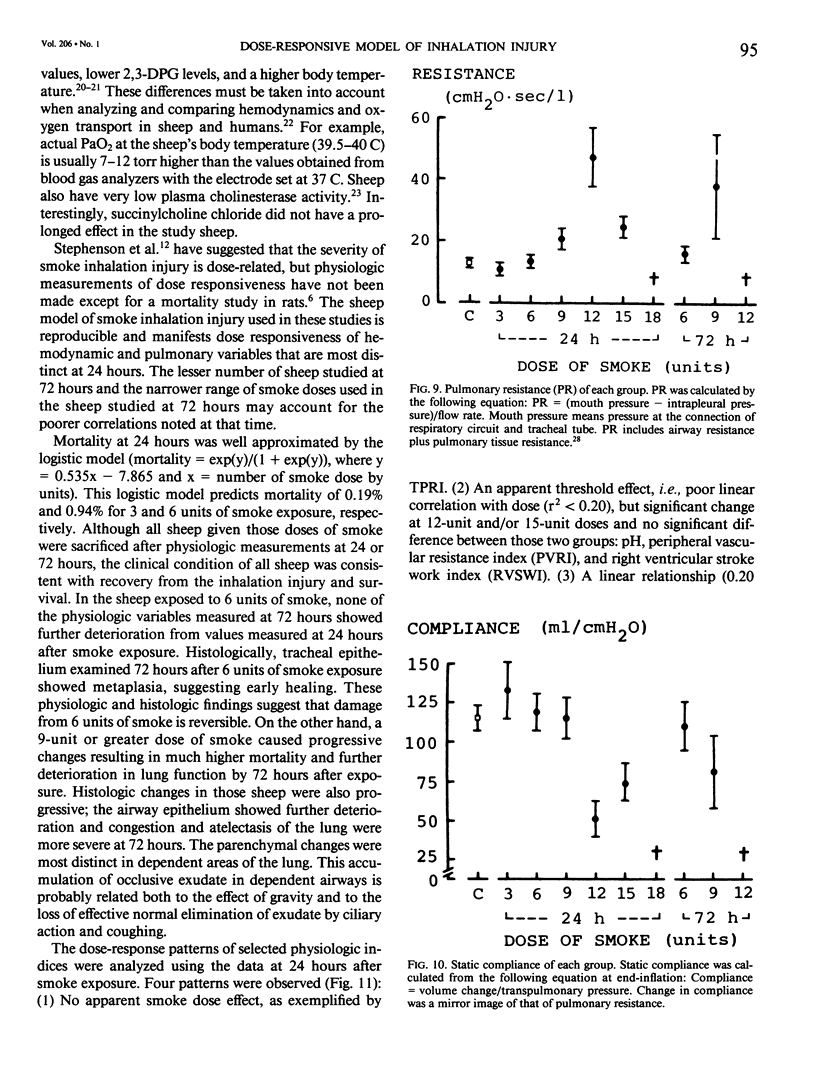
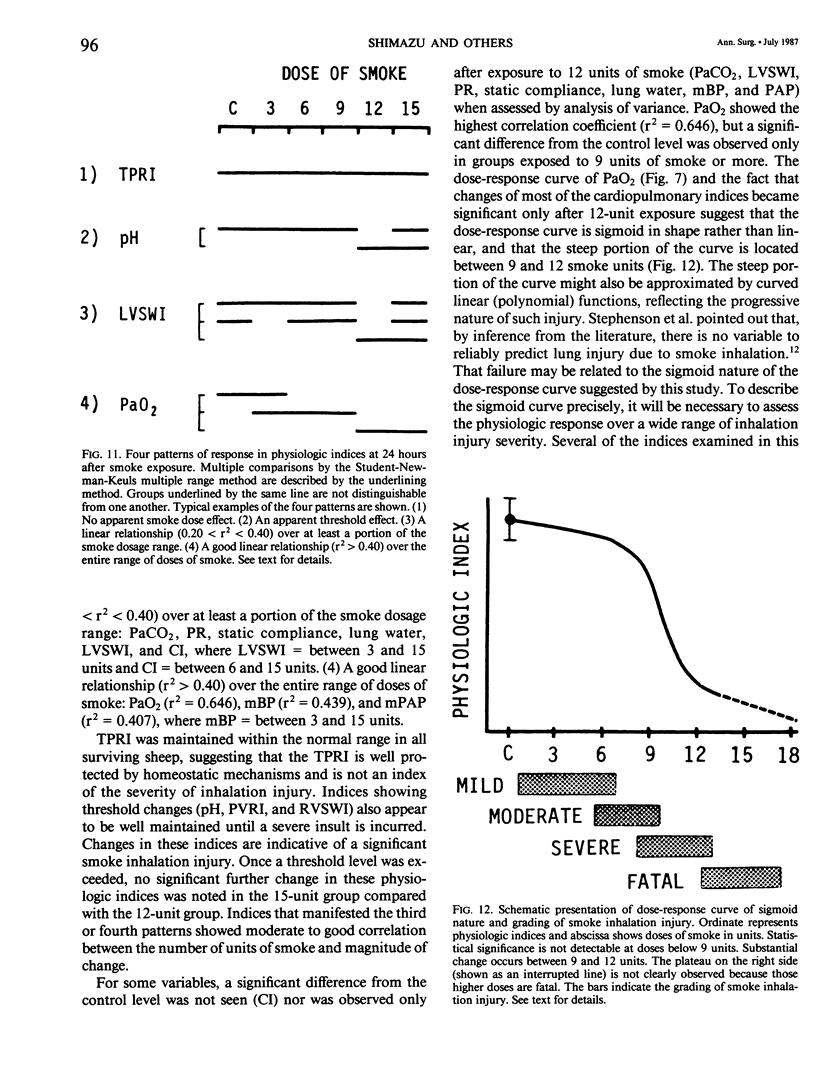
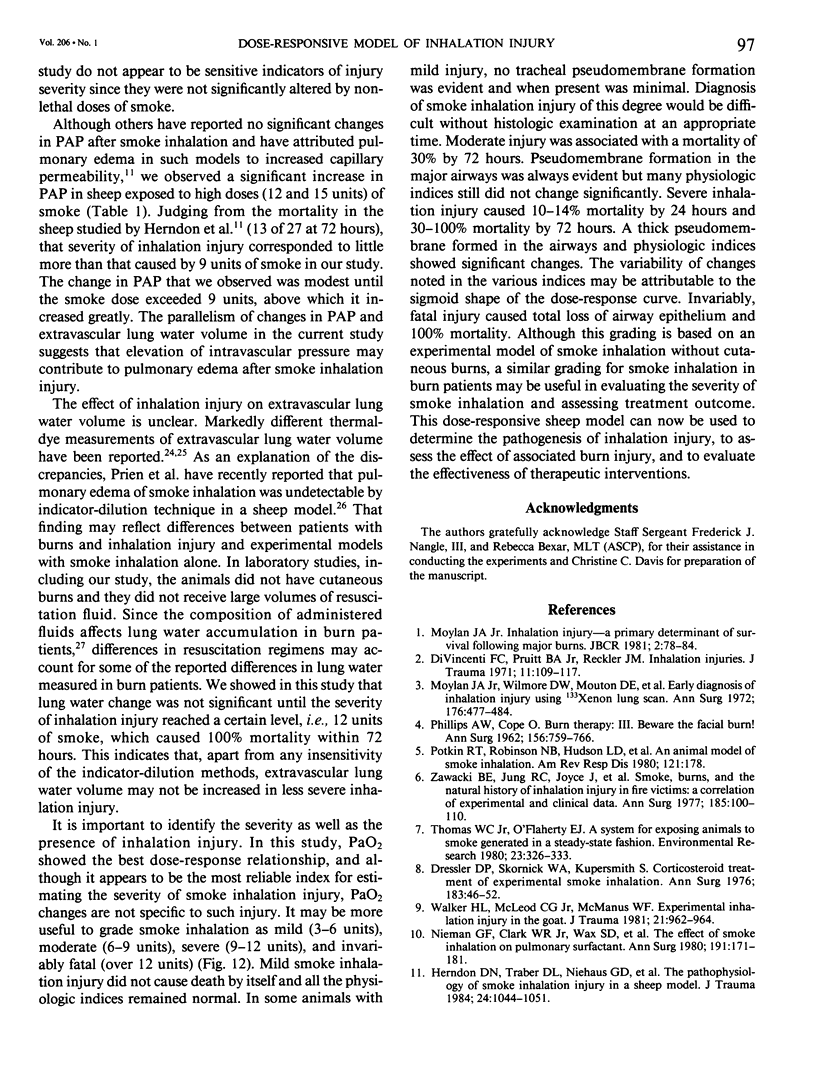
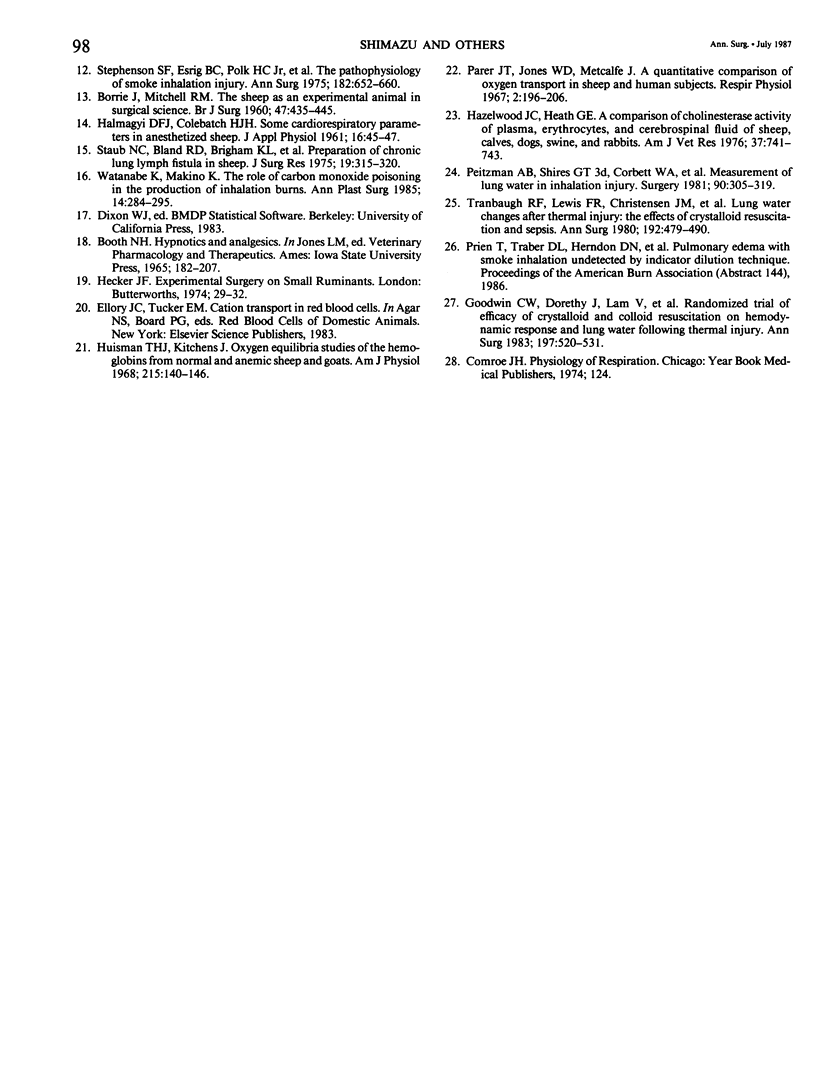
Images in this article
Selected References
These references are in PubMed. This may not be the complete list of references from this article.
- BORRIE J., MITCHELL R. M. The sheep as an experimental animal in surgical science. Br J Surg. 1960 Jan;47:435–445. doi: 10.1002/bjs.18004720421. [DOI] [PubMed] [Google Scholar]
- DiVincenti F. C., Pruitt B. A., Jr, Reckler J. M. Inhalation injuries. J Trauma. 1971 Feb;11(2):109–117. doi: 10.1097/00005373-197102000-00002. [DOI] [PubMed] [Google Scholar]
- Dressler D. P., Skornik W. A., Kupersmith S. Corticosteroid treatment of experimental smoke inhalation. Ann Surg. 1976 Jan;183(1):46–52. doi: 10.1097/00000658-197601000-00010. [DOI] [PMC free article] [PubMed] [Google Scholar]
- Goodwin C. W., Dorethy J., Lam V., Pruitt B. A., Jr Randomized trial of efficacy of crystalloid and colloid resuscitation on hemodynamic response and lung water following thermal injury. Ann Surg. 1983 May;197(5):520–531. doi: 10.1097/00000658-198305000-00004. [DOI] [PMC free article] [PubMed] [Google Scholar]
- HALMAGYI D. F., COLEBATCH H. J. Some cardiorespiratory parameters in anesthetized sheep. J Appl Physiol. 1961 Jan;16:45–47. doi: 10.1152/jappl.1961.16.1.45. [DOI] [PubMed] [Google Scholar]
- Hazelwood J. C., Heath G. E. A comparison of cholinesterase activity of plasma, erythrocytes, and cerebrospinal fluid of sheep, calves, dogs, swine, and rabbits. Am J Vet Res. 1976 Jun;37(6):741–743. [PubMed] [Google Scholar]
- Herndon D. N., Traber D. L., Niehaus G. D., Linares H. A., Traber L. D. The pathophysiology of smoke inhalation injury in a sheep model. J Trauma. 1984 Dec;24(12):1044–1051. doi: 10.1097/00005373-198412000-00007. [DOI] [PubMed] [Google Scholar]
- Huisman T. H., Kitchens J. Oxygen equilibria studies of the hemoglobins from normal and anemic sheep and goats. Am J Physiol. 1968 Jul;215(1):140–146. doi: 10.1152/ajplegacy.1968.215.1.140. [DOI] [PubMed] [Google Scholar]
- Moylan J. A., Jr, Wilmore D. W., Mouton D. E., Pruitt B. A., Jr Early diagnosis of inhalation injury using 133 xenon lung scan. Ann Surg. 1972 Oct;176(4):477–484. doi: 10.1097/00000658-197210000-00005. [DOI] [PMC free article] [PubMed] [Google Scholar]
- Nieman G. F., Clark W. R., Jr, Wax S. D., Webb S. R. The effect of smoke inhalation on pulmonary surfactant. Ann Surg. 1980 Feb;191(2):171–181. doi: 10.1097/00000658-198002000-00008. [DOI] [PMC free article] [PubMed] [Google Scholar]
- PHILLIPS A. W., COPE O. Burn therapy: III. Beware the facial burn. Ann Surg. 1962 Nov;156:759–766. doi: 10.1097/00000658-196211000-00009. [DOI] [PMC free article] [PubMed] [Google Scholar]
- Peitzman A. B., Shires G. T., 3rd, Corbett W. A., Curreri P. W., Shires G. T. Measurement of lung water in inhalation injury. Surgery. 1981 Aug;90(2):305–312. [PubMed] [Google Scholar]
- Staub N. C., Bland R. D., Brigham K. L., Demling R., Erdmann A. J., 3rd, Woolverton W. C. Preparation of chronic lung lymph fistulas in sheep. J Surg Res. 1975 Nov;19(5):315–320. doi: 10.1016/0022-4804(75)90056-6. [DOI] [PubMed] [Google Scholar]
- Stephenson S. F., Esrig B. C., Polk H. C., Jr, Fulton R. L. The pathophysiology of smoke inhalation injury. Ann Surg. 1975 Nov;182(5):652–660. doi: 10.1097/00000658-197511000-00020. [DOI] [PMC free article] [PubMed] [Google Scholar]
- Thomas W. C., Jr, O'Flaherty E. J. A system of exposing animals to smoke generated in a steady-state fashion. Environ Res. 1980 Dec;23(2):326–333. doi: 10.1016/0013-9351(80)90067-5. [DOI] [PubMed] [Google Scholar]
- Tranbaugh R. F., Lewis F. R., Christensen J. M., Elings V. B. Lung water changes after thermal injury. The effects of crystalloid resuscitation and sepsis. Ann Surg. 1980;192(4):479–490. doi: 10.1097/00000658-198010000-00007. [DOI] [PMC free article] [PubMed] [Google Scholar]
- Walker H. L., McLeod C. G., Jr, McManus W. F. Experimental inhalation injury in the goat. J Trauma. 1981 Nov;21(11):962–964. doi: 10.1097/00005373-198111000-00009. [DOI] [PubMed] [Google Scholar]
- Watanabe K., Makino K. The role of carbon monoxide poisoning in the production of inhalation burns. Ann Plast Surg. 1985 Mar;14(3):284–295. doi: 10.1097/00000637-198503000-00014. [DOI] [PubMed] [Google Scholar]
- Zawacki B. E., Jung R. C., Joyce J., Rincon E. Smoke, burns, and the natural history of inhalation injury in fire victims: a correlation of experimental and clinical data. Ann Surg. 1977 Jan;185(1):100–110. doi: 10.1097/00000658-197701000-00017. [DOI] [PMC free article] [PubMed] [Google Scholar]



